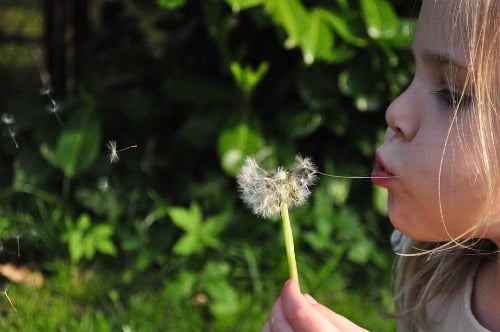Outdoor Learning: Tips for Beyond the Classroom Walls

Phew...it’s March!
We’ve made it past the “February funk” and early signs of spring abound. I keep catching myself peering out of the blinds of my classroom window. If I’m feeling drawn to the great outdoors, I bet my rambunctious five-year-olds are, too.
This got me reminiscing about my most memorable learning experiences as a child. Most of them did not happen within the confines of classroom walls.
I remember hands-on field trips, planting trees, observing ducks in the stormwater pond, egg drop contests, tasting honeysuckles in the schoolyard, seasonal scavenger hunts, lying in the grass while drawing cumulus clouds, etc.
The evolution of technology and the pressures of standardized testing have made these types of authentic learning experiences more of a rarity. However, outdoor learning allows for real-world application and helps make the learning stick. It gives students the opportunity to move and learn simultaneously while reducing stress, increasing motivation, and tapping into their natural curiosities. Plus, it’s just fun!
And early learners need fun! We shouldn’t be rushing childhood. We should be letting kids be kids for as long as possible!
So, prior to taking the learning outside, here are four tips to help ensure outdoor learning is productive.
1) Outdoor Norms
Students need to understand that outdoor learning does not mean a free-for-all. At first, they may associate going outside with playtime or recess, which is why it is imperative to set norms as a class. Before going outside, facilitate an open discussion and/or collectively create a chart to outline rules/expectations. We embrace these six norms in (ahem...outside) my kindergarten classroom.
- We walk.
- We stay together.
- We focus on learning.
- We take care of our tools.
- We listen for the signal.
- Nature stays in nature.
2) Define the Learning
Make sure students have a clear understanding of the intended learning outcomes for the lesson. This may be done using “I can” statements written in kid-friendly language. Here are a few examples:
- I can find shapes.
- I can use my five senses.
- I can draw the parts of a plant.
Establishing learning targets and having a well-defined purpose will keep kids focused and invested in the activity.
Also, it’s helpful to assign students something specific to do as an accountability piece. This will provide you with assessment data as well. When we go outside, my students almost always carry a slate or clipboard (to use as a hard surface), pencil, and paper to draw/write their learning in some way. The simple act of putting something tangible in their hands to complete will reduce off-task behaviors.
[Becker’s also recommends the “I’m an Explorer” Notebook as the perfect tool for students to record their outdoor findings.]
3) Optimize the Environment
Anticipate what distractions might be present when going outdoors and plan accordingly. Pay close attention to the weather. Avoid the playground, P.E. classes, or other high traffic areas. Will the children need to sit while working? If so, where can they do so comfortably? Do the children have appropriate clothing to wear? Have they used the restroom recently? Thinking about these types of details will minimize distractions and maximize learning time while outside.
4) Teachable Moments
We cannot control the elements of the outdoors as easily as we can our classrooms. Something unexpected is bound to happen that may cause you to veer off the lesson plan. We must be flexible and accept that “distraction” could create another opportunity for learning. For instance, one time, while we were outside some of my students, stumbled upon a praying mantis and they were amazed by it. So, I gave them time to be amazed! And guess what topic we studied across the curriculum the following day?
Need more ideas for outdoor learning activities to incorporate? The book Let’s Take It Outside: Teacher-Created Activities for Outdoor Learning offers countless activities for reinforcing math, literacy and language, science, art, and music outdoors.
Also, be sure to check out the various materials and furnishings Becker’s offers for building outdoor classrooms. So exciting!
-----
Bevin Reinen is an educator, blogger, writer, speaker, and consultant who has held numerous leadership positions throughout her 15 years in education. Bevin holds a Bachelor of Arts in English, a Master of Science in Early Childhood Education, and is currently pursuing a Doctorate of Education in K-12 Leadership. Bevin was named the 2011 Hampton Roads Magazine Top Teacher Overall and the 2015 Virginia Region II Teacher of the Year. Bevin is National Board Certified as an Early Childhood Generalist and was identified as an emerging leader by both ASCD and NAEYC. Her work appears in numerous print and online publications and she is the proud founder of TeachTrainLove.com.
The opinions, representations, and statements made within this guest article are those of the author and not of Becker’s School Supplies as a whole. Any copyright remains with the author and any liability with regard to infringement of intellectual property rights remain with them. The company accepts no liability for any errors, omissions or representations.
